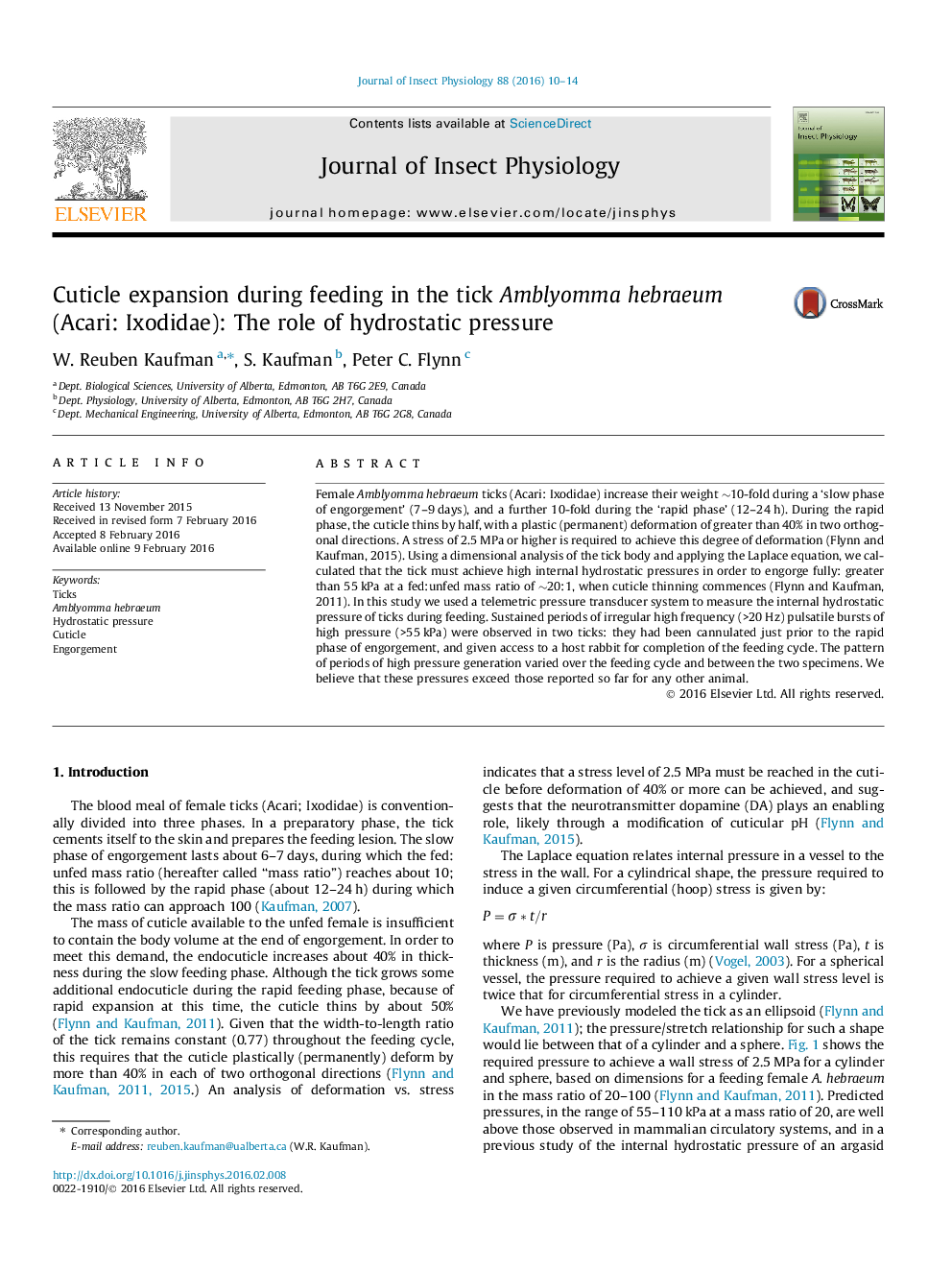| Article ID | Journal | Published Year | Pages | File Type |
|---|---|---|---|---|
| 2840282 | Journal of Insect Physiology | 2016 | 5 Pages |
•The female ixodid tick A. hebraeum stretches and thins the alloscutal cuticle during the blood meal.•The tick generates very high pressure (>55 kPA) in high frequency (∼50 s−1) pulses to achieve this.•The pressure pulses are irregular in pattern at both a micro and macro scale.
Female Amblyomma hebraeum ticks (Acari: Ixodidae) increase their weight ∼10-fold during a ‘slow phase of engorgement’ (7–9 days), and a further 10-fold during the ‘rapid phase’ (12–24 h). During the rapid phase, the cuticle thins by half, with a plastic (permanent) deformation of greater than 40% in two orthogonal directions. A stress of 2.5 MPa or higher is required to achieve this degree of deformation (Flynn and Kaufman, 2015). Using a dimensional analysis of the tick body and applying the Laplace equation, we calculated that the tick must achieve high internal hydrostatic pressures in order to engorge fully: greater than 55 kPa at a fed:unfed mass ratio of ∼20:1, when cuticle thinning commences (Flynn and Kaufman, 2011). In this study we used a telemetric pressure transducer system to measure the internal hydrostatic pressure of ticks during feeding. Sustained periods of irregular high frequency (>20 Hz) pulsatile bursts of high pressure (>55 kPa) were observed in two ticks: they had been cannulated just prior to the rapid phase of engorgement, and given access to a host rabbit for completion of the feeding cycle. The pattern of periods of high pressure generation varied over the feeding cycle and between the two specimens. We believe that these pressures exceed those reported so far for any other animal.
Graphical abstractFigure optionsDownload full-size imageDownload as PowerPoint slide
